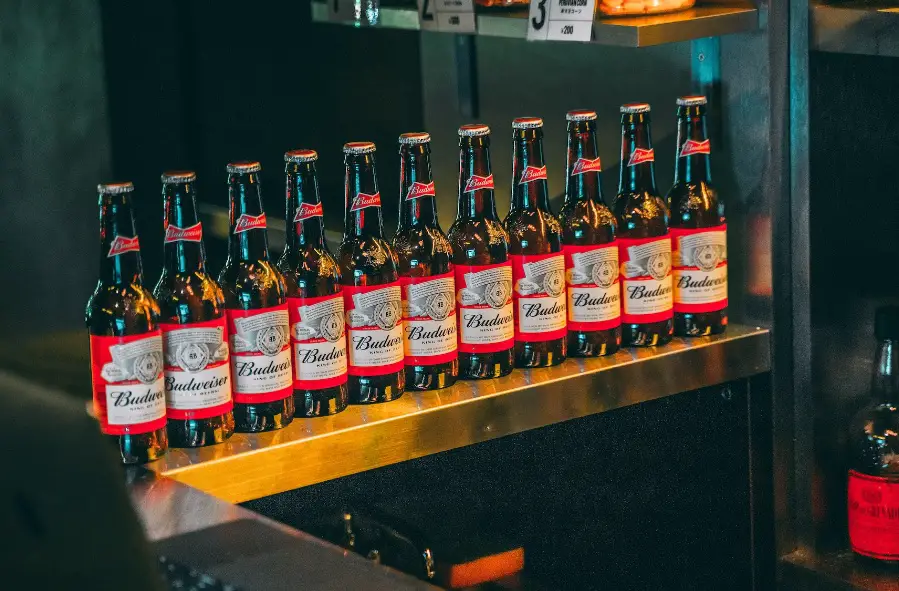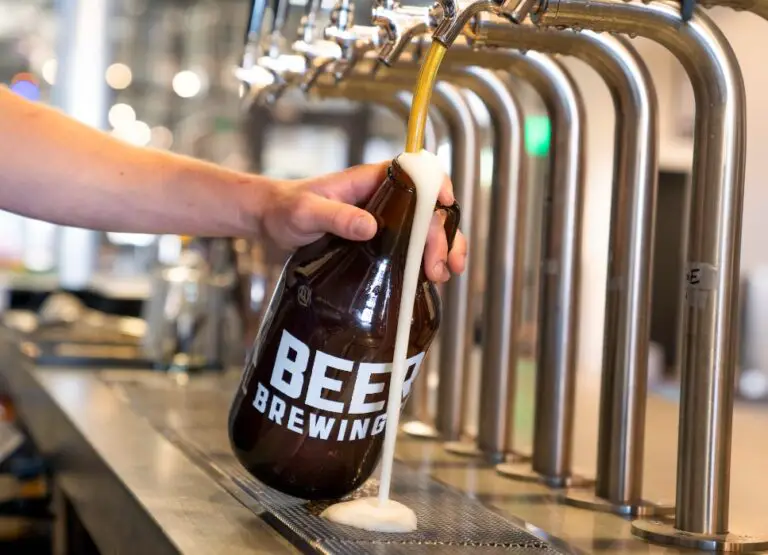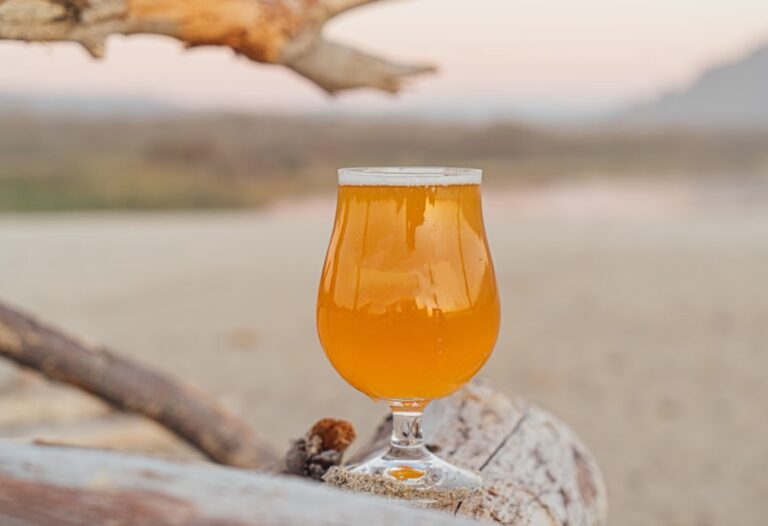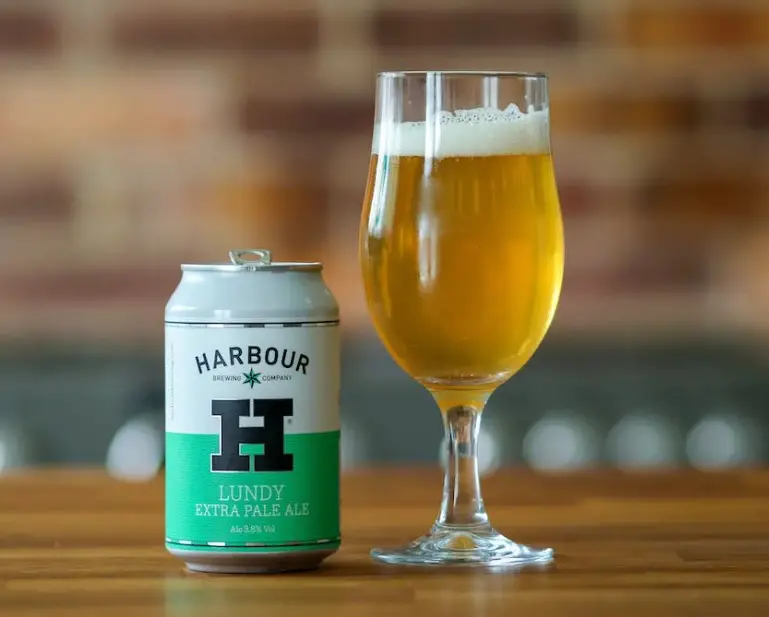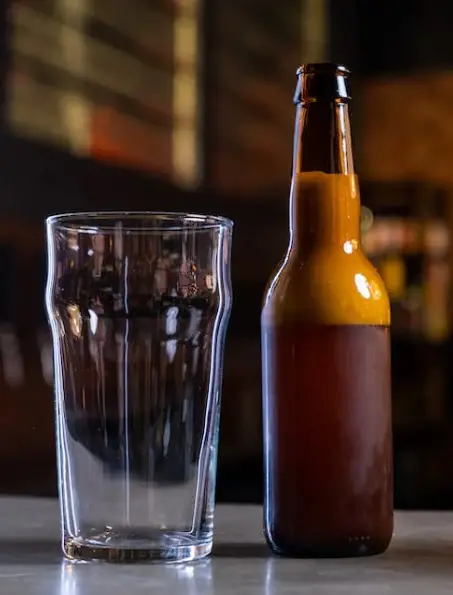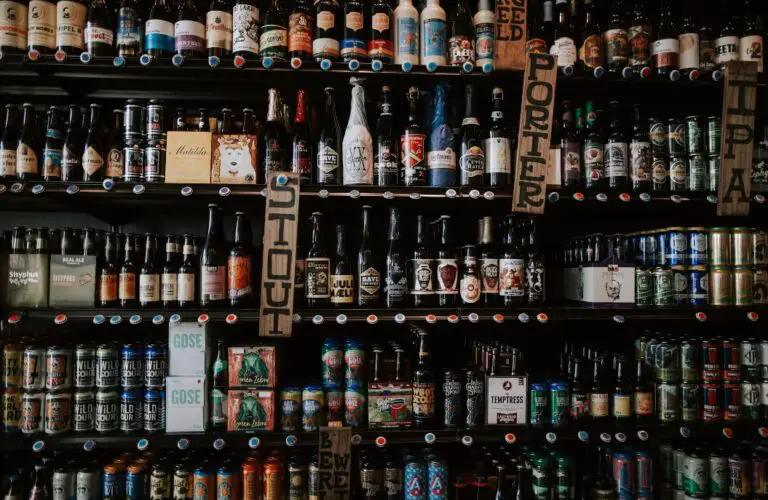Can Beer Get Moldy?
So, let’s start by answering the question first: can beer get moldy? Simply put, NO. Beer is not prone to developing mold in the same way that some food items do. Mold typically requires organic matter to grow, and beer, with its alcohol content and low pH, creates an inhospitable environment for mold. The alcohol acts as a natural preservative, inhibiting the growth of microorganisms.
However, beer can still go bad due to other factors, such as exposure to light, air, or improper storage conditions. While mold isn’t a common concern with beer, maintaining optimal storage conditions remains crucial to preserving its flavor and quality. Let’s delve deeper!
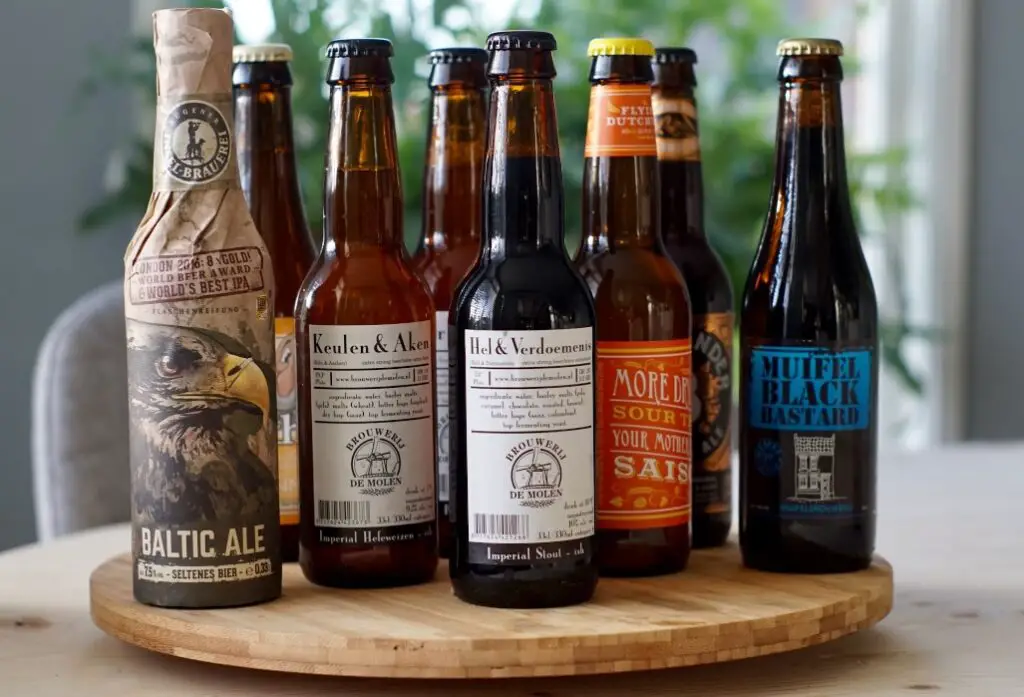
Mold Growing on Food and Drinks
What is Mold?
Mold is a type of fungus characterized by multicellular filaments called hyphae. It reproduces through microscopic spores and thrives in moist, slightly acidic to neutral environments, utilizing organic matter as a nutrient source. Mold can develop on various surfaces, including food items, and plays a crucial role in the natural decomposition of organic materials.
Ideal Conditions for Mold Growth:
- Temperature: Typically thrives in temperatures between 77°F and 86°F (25°C to 30°C).
- Humidity: Flourishes in environments with high humidity levels, generally above 60%.
- Darkness: Many molds prefer low-light conditions for growth.
- Organic Matter: Requires organic substrates for nutrition, such as carbohydrates and cellulose.
How Mold Grows on Food:
- Moisture Content: Moisture is crucial for mold growth; wet or damp conditions facilitate spore germination.
- Surface pH: Mold prefers slightly acidic to neutral pH levels for optimal growth.
- Oxygen: Most molds are aerobic and require oxygen for metabolism.
- Time: Mold growth is a gradual process influenced by the duration of exposure to conducive conditions.
Types of Foods and Beverages Prone to Mold Growth:
- Bread and Baked Goods: High carbohydrate content and moisture provide an ideal environment.
- Dairy Products: Mold can develop on cheeses and other dairy items.
- Fruits and Vegetables: Especially those with damaged skin or exposed flesh.
- Meat and Fish: Particularly in moist or improperly stored conditions.
- Sauces and Condiments: Especially those with low acidity and high moisture.
Why Mold Develops on Foods and Beverages:
- Nutrient Source: Mold utilizes the organic components of food as a nutrient source.
- Competition: In the presence of favorable conditions, molds outcompete other microorganisms.
- Spreading Mechanism: Spores enable mold to spread and colonize new areas.
- Adaptability: Molds are adaptable and can thrive in diverse environments, leading to their prevalence in various food items.
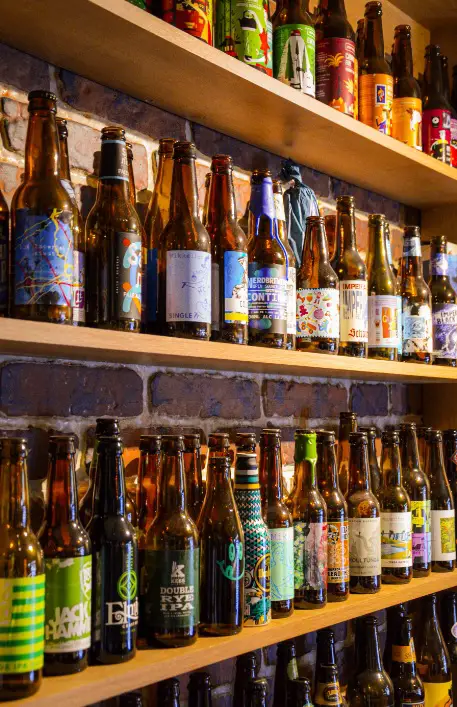
Can Beer Get Moldy?
Beer is generally resistant to mold growth due to its composition and brewing process. The key ingredients in beer, such as water, malted barley, hops, and yeast, undergo fermentation to produce alcohol. This alcohol content, along with the low pH resulting from the fermentation process, creates an inhospitable environment for mold. Additionally, hops, a natural preservative in beer, possess antimicrobial properties that further inhibit the growth of microorganisms.
However, certain conditions, such as exposure to air, light, or improper storage, can compromise the integrity of beer and potentially lead to spoilage. When beer is exposed to contaminants or stored in suboptimal conditions, there is a risk of mold growth. While rare, it emphasizes the importance of proper storage to preserve the quality and freshness of beer.
The ingredients in beer, specifically malted barley, also contribute to its resistance to mold. During the malting process, barley is germinated and then dried, eliminating the water content mold typically requires for growth. Additionally, the brewing process involves boiling the ingredients, acting as a sterilization step that further reduces the risk of contamination. The combination of alcohol, low pH, hops, and the brewing process collectively safeguard beer against mold development.
While beer is generally mold resistant, certain scenarios can increase the likelihood of spoilage. Exposure to air, either through improperly sealed bottles or cans, can introduce contaminants that may lead to mold growth. Similarly, prolonged exposure to light, especially sunlight, can break up hop compounds and affect the beer’s stability, potentially creating conditions conducive to mold. Inadequate storage temperatures, fluctuating between extremes, can also compromise the beer’s integrity and contribute to spoilage.
Instances of beer becoming moldy are relatively uncommon but not impossible. This is more likely to occur with homemade or craft beers that may not undergo the same rigorous quality control measures as commercially produced beers. Additionally, beers that have been stored for extended periods, especially in damp or humid conditions, may be susceptible to mold growth. Therefore, while the risk is minimal, consumers and brewers alike must be mindful of proper storage practices and the impact of environmental factors on beer quality.
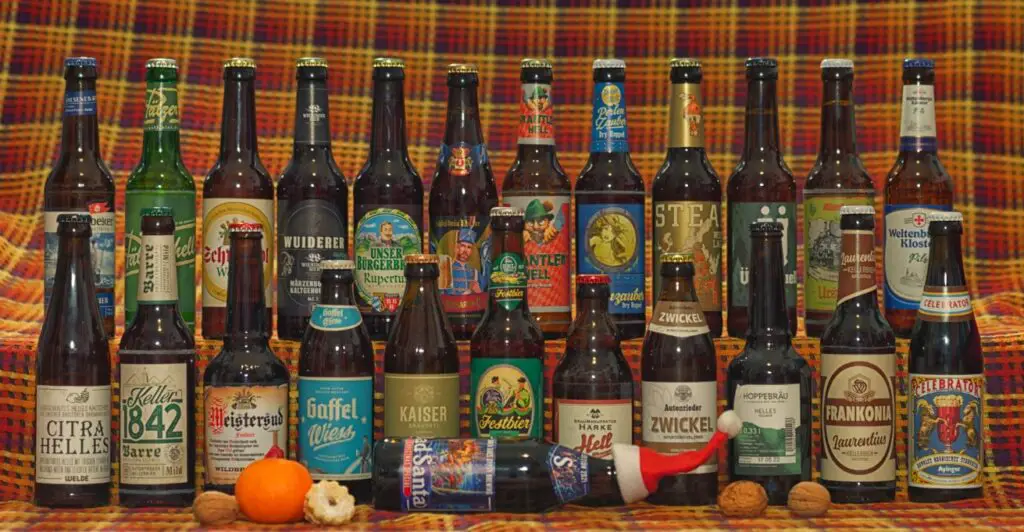
Preventing Mold Through Packaging
Proper packaging is instrumental in preventing mold in beer. Dark-colored glass bottles or opaque cans are commonly used to shield beer from light exposure, as ultraviolet rays can catalyze chemical reactions leading to off-flavors and potential spoilage. Adequate sealing, whether with bottle caps or can lids, is crucial to create a barrier against air intrusion, reducing the risk of contamination. Additionally, airtight packaging helps maintain carbonation, preserving the beer’s freshness.
Impact of Packaging Materials on Mold Growth
The choice of packaging materials significantly influences a beer’s susceptibility to mold. Glass, being impermeable and non-reactive, is a preferred material as it provides an effective barrier against external elements. Cans are also excellent options with their complete light blockage and airtight seals. However, using clear or green glass bottles may allow more light penetration, potentially compromising beer quality over time. Plastic bottles, while lightweight, are more permeable and may not offer the same level of protection.
Storage Conditions and Their Influence on Beer Quality
Proper storage conditions are pivotal in preserving beer quality and deterring mold growth. Ideally, beer should be stored in a cool, dark place, away from direct sunlight and temperature fluctuations. The recommended temperature range is typically between 45°F and 55°F (7°C to 13°C). This helps maintain the stability of the beer, preventing the breakdown of hop compounds and other delicate flavor elements. Consistent temperatures also discourage the growth of any potential contaminants that could lead to spoilage.
Humidity control is equally essential. Excessive humidity can create a damp environment, potentially fostering mold growth on packaging or labels. Therefore, storing beer in a dry environment minimizes the risk of mold while preserving the label’s integrity and overall presentation. By adhering to proper packaging practices and storage conditions, brewers and consumers alike can contribute to the longevity and quality of beer, minimizing the chances of mold-related issues.
How to Spot Spoiled Beer?
- Mold or Floating Particles: Visible mold growth or floating particles in the beer may indicate spoilage.
- Cloudiness or Sediment: Excessive cloudiness or sediment that is unusual for the beer style can be a sign of quality degradation.
- Changes in Smell:
- Offensive Odors: Spoiled beer may emit unpleasant, sour, or rancid odors instead of the characteristic aromas associated with the style.
- Moldy or Musty Smell: Mold growth often introduces a distinctive moldy or musty smell.
- Altered Taste:
- Off-Flavors: Spoiled beer can develop off-flavors, such as a sour or vinegar-like taste.
- Flatness: Loss of carbonation, resulting in a flat taste, may indicate quality deterioration.
- Unusual Color Changes:
- Darkening or Discoloration: Unexpected changes in color, especially darkening, can be indicative of spoilage.
- Packaging Integrity:
- Leaking or Bulging Containers: Damaged or compromised packaging, including leaking or bulging bottles or cans, may suggest spoilage or contamination.
- Abnormal Carbonation:
- Excessive Fizziness: An unusually high level of carbonation or excessive foaming upon opening can be a sign of fermentation issues or contamination.
- Unpleasant Aftertaste:
- ** Lingering Off-Tastes:** Spoiled beer may leave an unpleasant aftertaste that differs from the intended flavor profile.

Wrapping It Up
In conclusion, while beer is generally resistant to mold due to its alcohol content and brewing process, it’s not immune to spoilage. Proper storage in cool, dark conditions and sealed packaging minimizes the risk. Watch for visual changes, off-putting smells, altered taste, and packaging issues as potential indicators of spoiled beer. You can enjoy your brews worry-free by understanding and practicing good storage habits. Cheers!

I am a young architect with a passion that goes beyond blueprints… it’s beer! undertherosebrewing.com is more than just a blog, it’s a manifestation of my lifelong dream to explore, read, and learn everything about beer. Join the blog on this unfiltered and genuine adventure into the heart of beer culture. Cheers!
